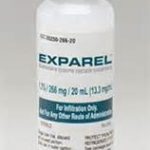The use of rib cartilage in rhinoplasty is that it provides a virtual unlimited amount of graft material. Its use is most commonly indicated for significant nasal augmentations particularly in certain ethnic noses that lack overall nasal projection as well as in major nasal reconstructions. It is probably underutilized as a donor site as many rhinoplasty surgeons may not feel that comfortable with its harvest and patients are often not enthused about its use either.
In the March 2017 issue of the JAMA Facial Plastic Surgery Journal in the Surgical Pearls section, an article was published entitled ‘Technique to Reduce Time, Pain and Risk in Costal Cartilage Harvest’. In this paper the authors describe their technique which fundamentally involves two steps for improving costal harvest in rib graft rhinoplasty. First, don’t take a full thickness cartilage graft. It is an in situ technique where the rib is sectioned longitudinally at a partial thickness level of the rib between a proximal and distal cartilage cuts. Secondly, intercostal and soft tissue injections are done using a long-lasting local anesthetic (Exparel) to decrease postoperative pain.
The risk of pleural violation and potential pneumothorax are the dreaded complications of rib harvest. But the reality is that risk varies depending upon where on the chest wall that rib is being harvested. This is a real risk above the level of rib #6 but not down at the level of ribs #s7, 8 or 9. In smaller rib grafts any form of in situ rib harvest makes it both safer and easier to do. But in larger rib graft harvests an in situ approach may not allow for an adequate graft harvest. But, when possible, it is a good technique and I have used it many times. I usually take a triangular wedge along the graft length which can more easily be cut with a standard #15 scalpel blade.

Dr. Barry Eppley
Indianapolis, Indiana


